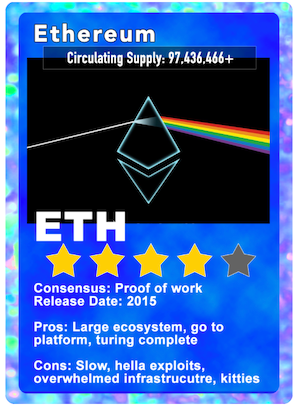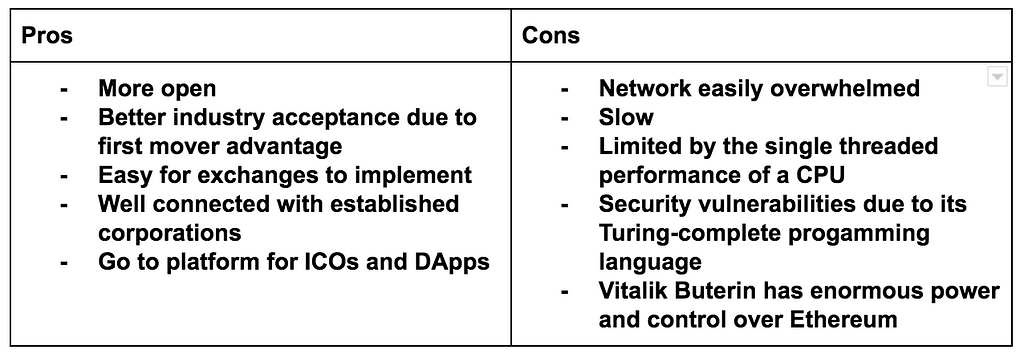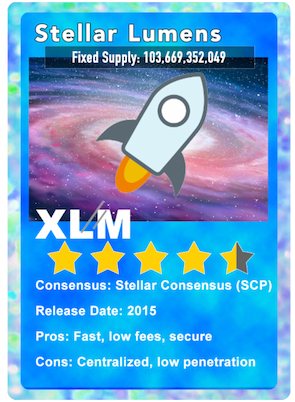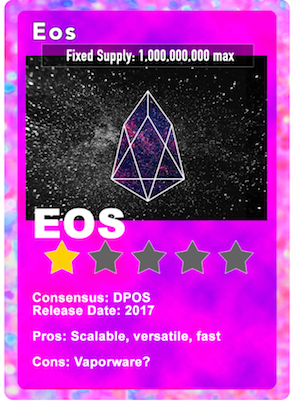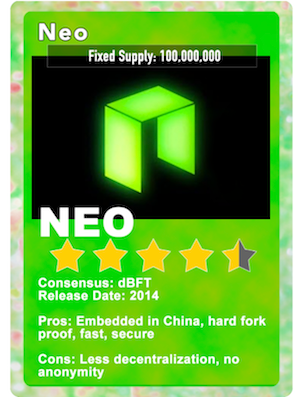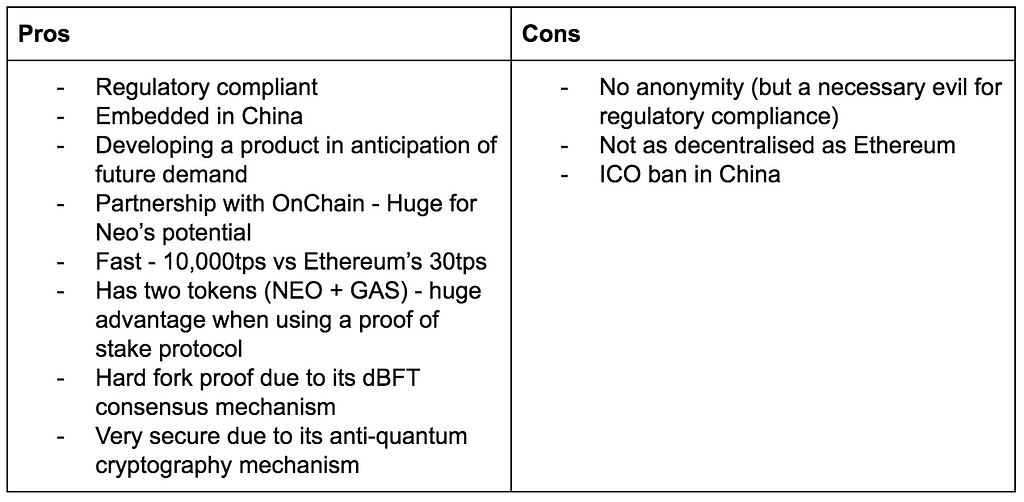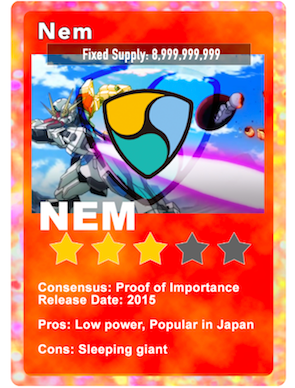Latest news about Bitcoin and all cryptocurrencies. Your daily crypto news habit.
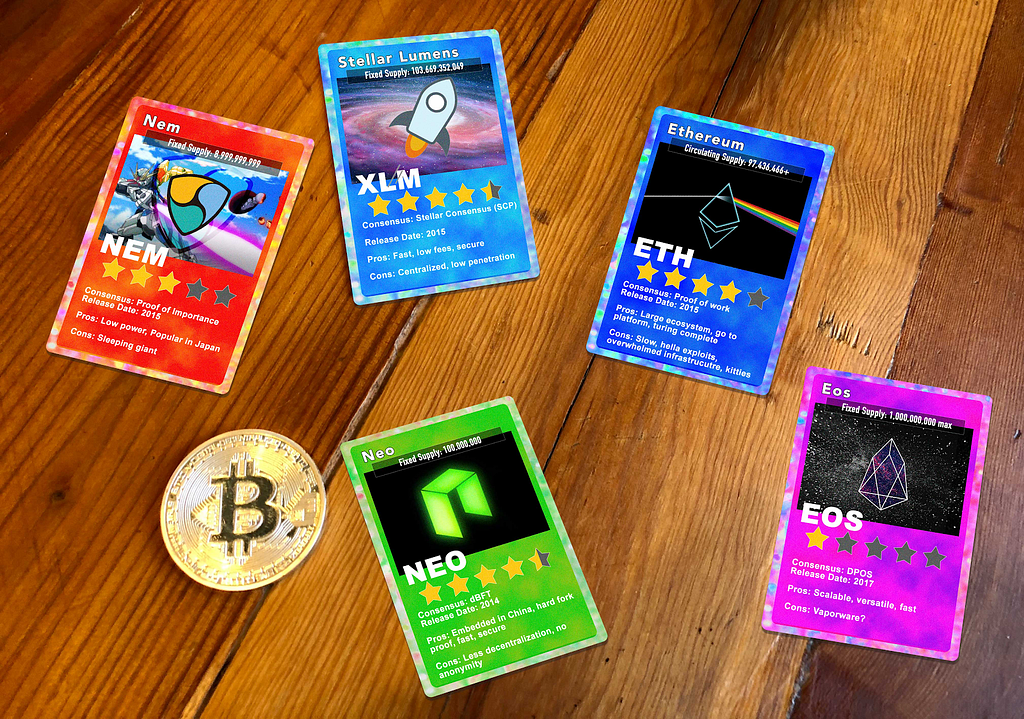 Ecosystems are racing to create the economic powerhouse behind the new startup generation
Ecosystems are racing to create the economic powerhouse behind the new startup generation
It took two years for Microsoft to release its Windows 1.0 in Nov 1983, 20 years later Microsoft dominated the PC market with over 90% market share. Blockchain ecosystems are in their infancy and currently they are battling it out, but one is bound to have a similar colossal impact as Microsoft — it may not even exist yet. Today blockchain remains to grow up (it lies in pre Windows 1.0 territory). Of course, grow up it will, and fast because blockchain is to assets what the internet is to content — for the first time in history you can move value instantly from one place to the other side of the world with no intermediary. Whilst today only a very small percentage of global GDP (0.025% or $20bn) is held in the blockchain, analysts at UBS estimate that blockchains could be a $300bn to $400bn global industry by 2027. So regardless of what people say about bitcoin, blockchain is here to stay.
An Arm’s Race…
A whole new class of blockchains are sprouting and evolving — ones that will be increasingly more scalable, performant and have built in governance so decisions can be made without any malicious hard forks. These new generations of blockchains have decoupled the application from the platform behaving as general purpose platforms. So you could build a currency on top of them like a Bitcoin, or you could build a social network on top of them, a ride sharing app, a stock exchange or an identity management system.
However, there is currently no brand loyalty in blockchain. So it’s an arms race — whomever can do something better, wins.
All of the following platforms differ somewhat in terms of how they’re governed, the services they offer and the size and strength of the community. It will be fascinating to see how this plays out. The internet is going to rapidly look very different and much of that is being determined by the battle that is currently unfolding.
The Contenders
So who’s in the race? The top contenders for the decentralized platforms are Ethereum, Stellar, EOS, NEO and NEM. Here’s what you need to know…
Ethereum
Vitalik Buterin — Co-Founder and programmer from Toronto. He co-founded the online news website Bitcoin Magazine in the same year
Gavin Wood — Co-founder and former CTO. He went on to found Parity Technologies. Gavin also helped found or advise: GridSingularity, Blockchain Capital, Polychain Capital, Melonport
Ethereum is the first decentralized platform and it paved the way for the next generation. The crypto world got overly excited about Ethereum as it opened new realms of possibilities. Whilst Ethereum has a large community of supporters, enthusiasm has outpaced the technical development. Think of it as AOL or Bebo: gone to seed. Ethereum mimicked many of Bitcoin’s design patterns such as Proof-of-Work consensus algorithm and therefore inherited many of Bitcoin’s flaws; it is slow and consumes a horrendous amount of electricity. A single app, CryptoKitties, has recently been bringing the Ethereum network to its knees. Meanwhile miners of Ethereum are already using more electricity than a small country like Cyprus. Also like Bitcoin, Ethereum does not have a governance process built into the blockchain. This means that the Ethereum community does not have a good way to make enhancements to their protocol without hard forking (or splitting Ethereum into two separate blockchains, one with the enhancement and one without). Thus Ethereum and Ethereum Classic. This leaves a tremendous amount of weight on Vitalik Buterin’s opinion, which does beg the question as to how decentralized Ethereum really is.
If Ethereum can work through these problems and upgrade quickly, it can maintain a decent ranking, however it’s likely it will have to compete more and more with newer technologies and it may get used only for minor niches like hosting ICOs or specific smart contracts.
Stellar
Jed McCaleb — Most likely the only person who has built two crypto-currency companies at scale. Co-founded eDonkey in 2001 (a p2p file sharing company). Created Mt Gox. Founded Ripple.The Stellar team attracted prestigious advisors like Patrick Collison, (Stripe), Sam Altman (President at Y combinator) and Matt Mullenweg (Founder of WordPress).
Stellar is significantly cheaper and faster than other protocols. It costs 1 cent to make 100,000 transactions on Stellar. It’s more secure than Ethereum — its expressive but purposefully limited system for smart contracts limits potential to write exploitable code. Its simplicity makes it ideal for applications that don’t require the full generality of Turing-complete smart contracts (which applies to the vast majority of ICOs and more complex contracts). In short it’s high performance, secure and the costs of transacting on the network are exponentially cheaper.
The first ICO to happen on the Stellar blockchain was mobius.network. Mobius was co-founded by David Gobaud, it is a sort of middleware for app developers, enabling the creation of decentralized apps, these are called “DApp”, to avoid the GooglePlay and AppStore pay tolls and to also link easily to different blockchains. They define themselves as the Stripe for blockchain. For Mobius, Stellar offers a level of expressivity that’s very practical with significantly greater security and lower attack surface compared to Ethereum, plus transaction speeds and cost are highly attractive. It closed its token ICO in just two hours.
EOS
The project is developed by a company called BlockOne, which is run by CTO Dan Larimer (co-founder of Bitshare and Steemit) and CEO Brendan Bloomer. Brock Pierce is a partner, a venture capitalist and an entrepreneur who pioneered the market for digital currency in games.
EOS is a blockchain smart contracts platform that promises great advances in addressing some of the key challenges in current blockchain tech’s performance, such as user experience and governance. The key here is the word ‘promise’ because EOS is still undergoing development and doesn’t actually have anything concrete.
What it does promise is to achieve huge performance improvements over Ethereum’s by implementing a number of scaling techniques, such as Delegated Proof of Stake (DPoS), parallel execution, partial evaluation and other optimisations. It wants to be a real contender in the decentralized app (DApp) arena, lowering the barriers to entry for developers and co and build a platform that can securely and smoothly scale to thousands of transactions per second whilst providing a good user experience. To reduce latency and maximise performance it is looking to use parallelisation in the production of blocks. The whitepaper talks of a way of breaking blocks into threads that can run in parallel. Interestingly Bitfinex, a cryptocurrency exchange, just announced a new exchange built on top of EOS — EOSfinex. The announcement states its reasons for choosing EOS are its fast transaction process, its minimal fee and attractive confirmation times.
NEO
Da Hongfei — FounderZhang Zhengwen—Core Developer. Backed by the company OnChain. OnChain’s system, known as DNA (Decentralized Network Architecture) aims to work with Chinese businesses and government. NEO acts as the foundation of DNA. If OnChain can integrate with Chinese businesses and government, that will greatly spur its adoption.
Nicknamed ‘the Ethereum of China’ due to the way it has been built around providing an underlying set of platform-centric functionality. Released in China in 2014. Formally known as ‘Antshares’.
According to its white paper it’s committed to ‘the use of blockchain technology and digital identity to digitise assets, the use of smart contracts for digital assets to be self-managed, to achieve ‘smart economy’ with a distributed network.’ What a mouthful! In short, it’s designed to digitise the world’s economic system by providing a decentralised infrastructure through which smart contracts can be pushed. NEO is building by learning from Ethereum’s mistakes so NEO is developing their platform in anticipation of future demands. Meanwhile Ethereum is developing in response to new demands.
NEO is embedded in the Chinese market, which could be massive especially if developed properly. Being embedded in China will give them a huge advantage. China’s giant domestic market provides tech ventures with enormous network effects that are present at such a large scale. Not only are tech ventures in China great at scaling up fast but also the state protects its nascent tech industry from foreign competition. However in terms of its function as an ICO platform — it has some hurdles to overcome; the ban by the Chinese government of ICO activity has a significant impact on its activity but its expected to pick up in other countries this year.
NEM
Lon Wong — Founding President of the NEM.io Foundation. His journey to NEM began when he decided to take a second look at blockchain technology in 2013, after having been introduced to Bitcoin mining in 2010Jeff Mcdonald — Vice President NEM has been on the market since 2015 and has a large following in Japan, a country at the forefront of the legislation movement. The so-called ‘smart asset blockchain’ is apparently capable of operating at 4000 transactions per second, ie. it can withstand a fair amount of workload.
NEM is not mined, it’s harvested. When an account has 10,000 or more NEM (XEM), the money will naturally become vested by NEM’s algorithm. NEM has its own consensus algorithm. It uses proof-of-importance. This means when a user attempts to send coins, his transactions list is according to priority, and many factors decide the importance of each transaction that has to happen on the network. This could be the number of coins a user has, the number a user is trying to move and the number of frequent transactions a user has made in the past. The more POI you have by holding stake and transacting, the more POI you gain. The more that XEM is used, the higher the amount harvesters receive. This is an incentive to invest in XEM because it will pay for its own fees.
How is it different? Its system allows enterprises to customise and differentiate its blockchain technology — it aims to solve the issue of incorporating blockchain into existing networks. A feat considered costly and time-consuming. It’s attempting to move beyond the confines of the financial industry by targeting retail. Its Smart Asset System can be configured to allow loyalty points to be turned into a form of money that customers could then use. It also offers the ability to act as an authentication service with cryptographic signatures.
Funnily enough NEM started out as a fork of NXT, another open source cryptocurrency and payment network platform, but fixed its own codebase after the team decided to rebuild the system with a strong focus on scaling and speed; it has learnt from everyone else’s mistakes.
One of its major partnerships is with the Malaysia Digital Economy Corporation (MDECC), a government-owned institute that manages digital infrastructure and security and technology related laws in Malaysia. It’s a good start for NEM.
All of the above want to become the part of the dominant blockchain platforms for the internet: for decentralized applications, ICOs and smart contracts.
The issue with all of these cryptocurrencies is that barriers to entry are low. New virtual currencies are cropping up each month left right and centre, many with their own proprietary versions of blockchain. A better version of each of these could appear at any time taking the Microsoft crown. Adoption of any however could take some time; blockchain has been around for a decade but it arguably only came into the limelight with Bitcoin’s price surge — in a way, Bitcoin is to Blockchain what Yahoo was to the internet. So let’s wait and see what unfolds from these players.
Who Is The Next Microsoft In Blockchain? was originally published in Hacker Noon on Medium, where people are continuing the conversation by highlighting and responding to this story.
Disclaimer
The views and opinions expressed in this article are solely those of the authors and do not reflect the views of Bitcoin Insider. Every investment and trading move involves risk - this is especially true for cryptocurrencies given their volatility. We strongly advise our readers to conduct their own research when making a decision.
